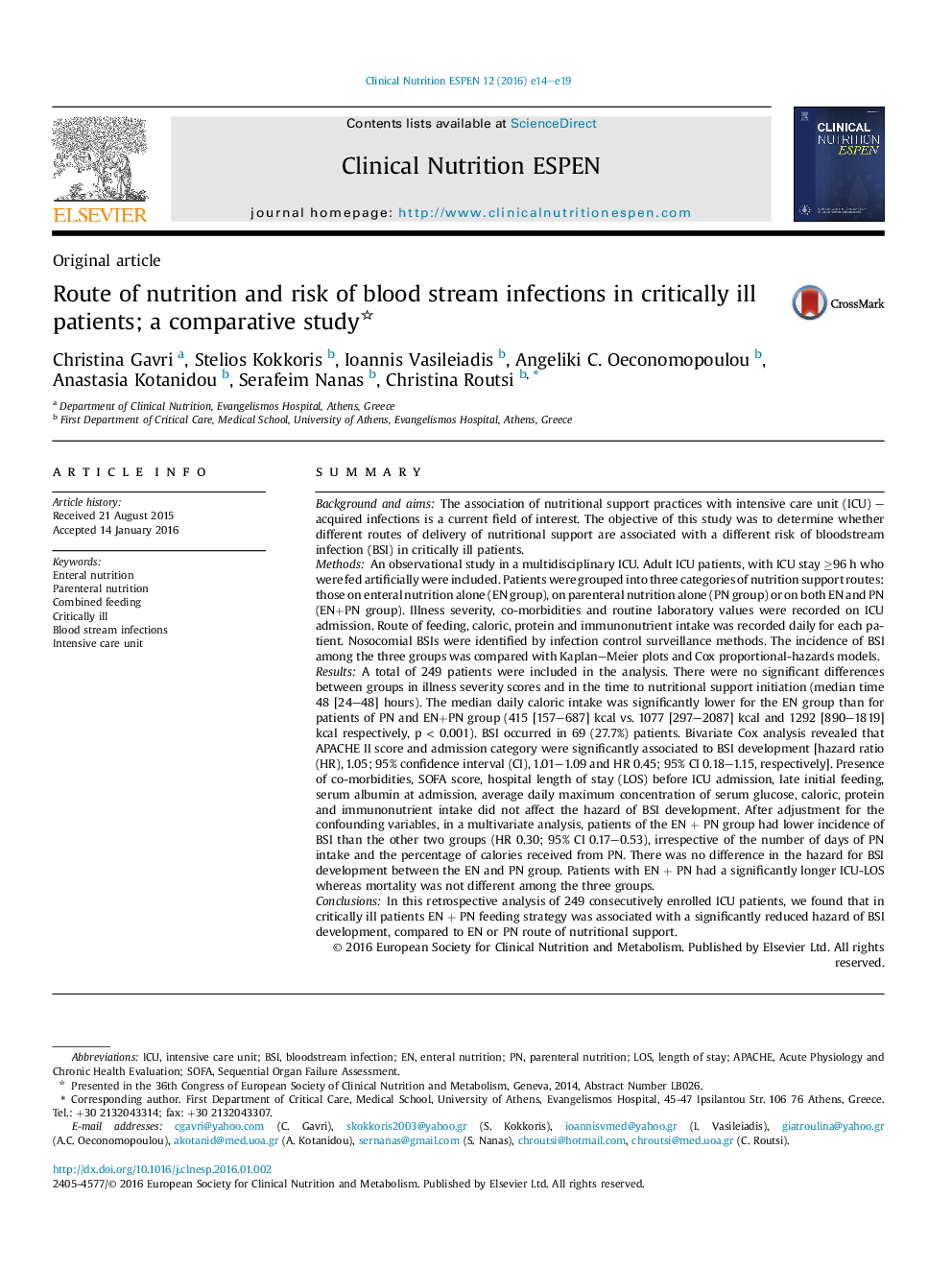| کد مقاله | کد نشریه | سال انتشار | مقاله انگلیسی | نسخه تمام متن |
|---|---|---|---|---|
| 5872386 | 1564727 | 2016 | 6 صفحه PDF | دانلود رایگان |
SummaryBackground and aimsThe association of nutritional support practices with intensive care unit (ICU) - acquired infections is a current field of interest. The objective of this study was to determine whether different routes of delivery of nutritional support are associated with a different risk of bloodstream infection (BSI) in critically ill patients.MethodsAn observational study in a multidisciplinary ICU. Adult ICU patients, with ICU stay â¥96 h who were fed artificially were included. Patients were grouped into three categories of nutrition support routes: those on enteral nutrition alone (EN group), on parenteral nutrition alone (PN group) or on both EN and PN (EN+PN group). Illness severity, co-morbidities and routine laboratory values were recorded on ICU admission. Route of feeding, caloric, protein and immunonutrient intake was recorded daily for each patient. Nosocomial BSIs were identified by infection control surveillance methods. The incidence of BSI among the three groups was compared with Kaplan-Meier plots and Cox proportional-hazards models.ResultsA total of 249 patients were included in the analysis. There were no significant differences between groups in illness severity scores and in the time to nutritional support initiation (median time 48 [24-48] hours). The median daily caloric intake was significantly lower for the EN group than for patients of PN and EN+PN group (415 [157-687] kcal vs. 1077 [297-2087] kcal and 1292 [890-1819] kcal respectively, p < 0.001). BSI occurred in 69 (27.7%) patients. Bivariate Cox analysis revealed that APACHE II score and admission category were significantly associated to BSI development [hazard ratio (HR), 1.05; 95% confidence interval (CI), 1.01-1.09 and HR 0.45; 95% CI 0.18-1.15, respectively]. Presence of co-morbidities, SOFA score, hospital length of stay (LOS) before ICU admission, late initial feeding, serum albumin at admission, average daily maximum concentration of serum glucose, caloric, protein and immunonutrient intake did not affect the hazard of BSI development. After adjustment for the confounding variables, in a multivariate analysis, patients of the EN + PN group had lower incidence of BSI than the other two groups (HR 0.30; 95% CI 0.17-0.53), irrespective of the number of days of PN intake and the percentage of calories received from PN. There was no difference in the hazard for BSI development between the EN and PN group. Patients with EN + PN had a significantly longer ICU-LOS whereas mortality was not different among the three groups.ConclusionsIn this retrospective analysis of 249 consecutively enrolled ICU patients, we found that in critically ill patients EN + PN feeding strategy was associated with a significantly reduced hazard of BSI development, compared to EN or PN route of nutritional support.
Journal: Clinical Nutrition ESPEN - Volume 12, April 2016, Pages e14-e19
